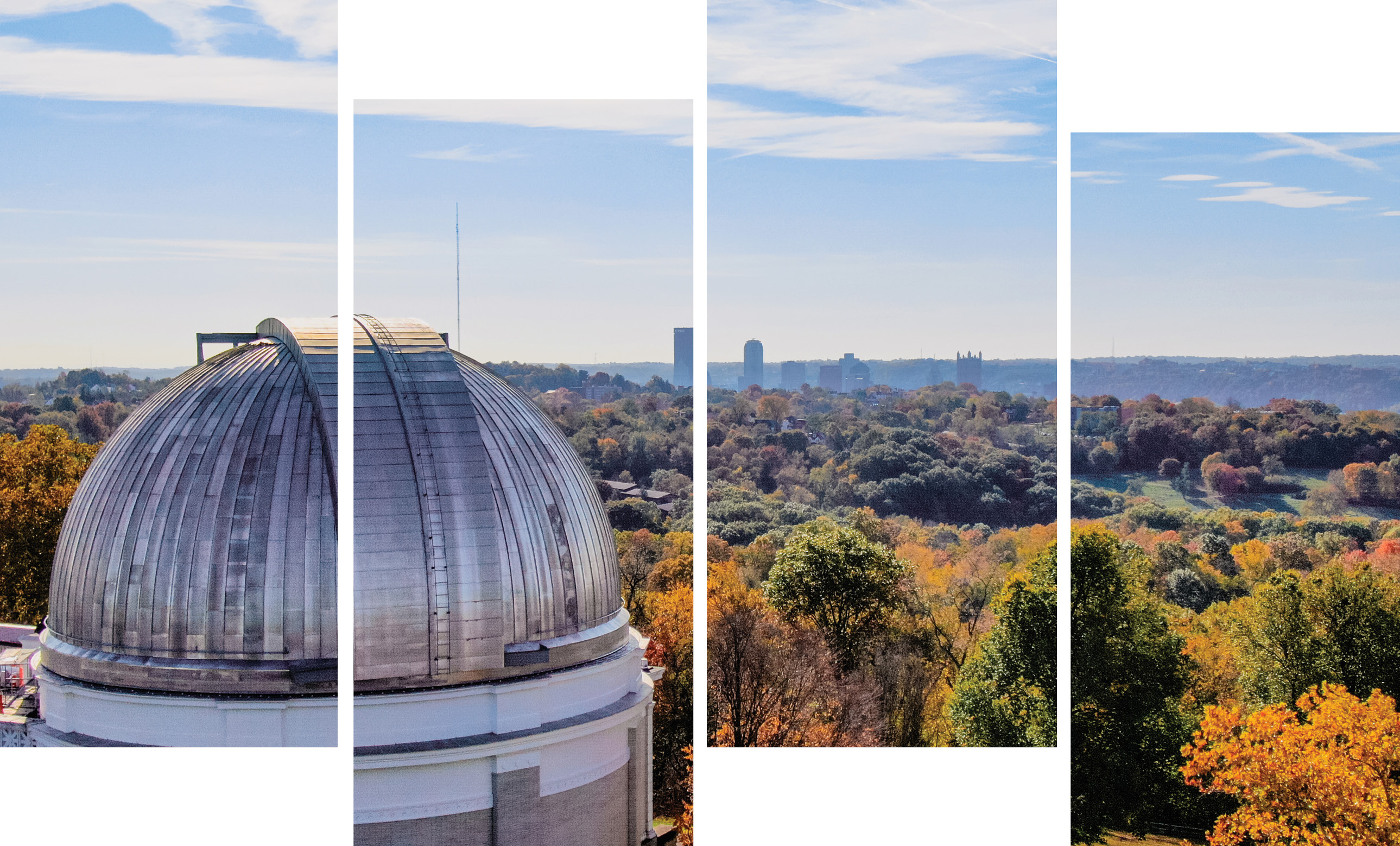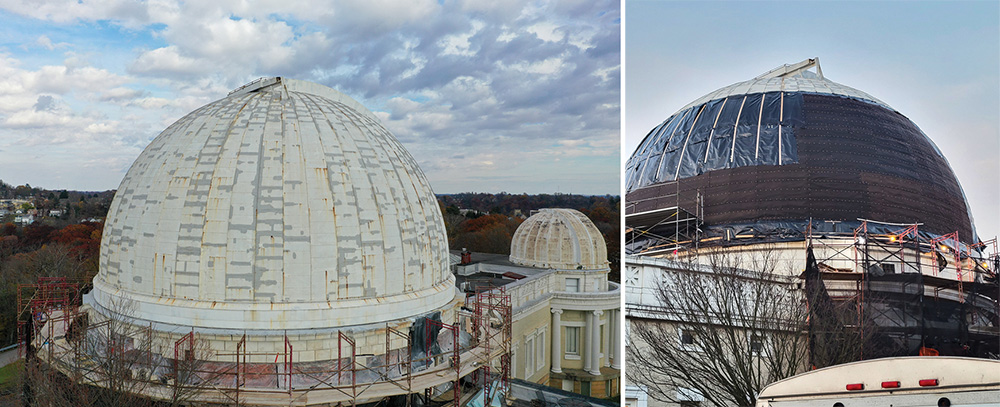
In 1859, 32 astronomy enthusiasts from Allegheny City, Pa., founded the Allegheny Telescope Association. They purchased a 13-inch refracting telescope and set it up in an observatory building. Eight years later, the telescope and building were donated to Western University of Pennsylvania, which later became the University of Pittsburgh.
At the university, the Allegheny Observatory leadership took a new scientific direction and the building became a major astronomical research institution. In 1912, the observatory was relocated to its current location in Riverview Park, 4 miles north of downtown Pittsburgh, and placed on the National Register of Historic Places.
The observatory houses three domes with telescopes: the Fitz-Clark Refractor donated from the astronomy club, a 16-inch Meade telescope and a 30-inch Thaw Memorial Refractor measuring distances to nearby stars.
In 2021, the painted steel on the dome that houses the Thaw Memorial Refractor was replaced with new alloy-coated copper panels installed by Kalkreuth Roofing and Sheet Metal Inc., Wheeling, W.Va.

Repairs
In December 2021, the Kalkreuth Roofing and Sheet Metal team began work on the Allegheny Observatory dome by removing the existing steel dome covering, checking the wood substrate for deficiencies and making repairs.
“The tear-off procedures were labor-intensive, requiring our team to carefully navigate custom fixtures to preserve the integrity of the roof structure,” says John Sberna, project manager for Kalkreuth Roofing and Sheet Metal. “Once the panels were removed, we faced another intricate task: installing the substrate plywood boards. Each board was an individual entity, a unique feature that required painstaking attention to detail.”

Beyond its many historical items, Allegheny Observatory houses a collection of more than 110,000 astrometric photographic plates taken with the Thaw Memorial Refractor (an all-sky camera used to monitor the weather at night), a seismograph linked to the national network and a NASA All-Sky Fireball Camera used to track bright meteors.
After the team installed 8,100 square feet of 3/8-inch-thick plywood on the dome, it laid asphalt-saturated felt with Carlisle WIP® 300HT self-adhering rubberized asphalt underlayment followed by rosin-sized slip sheets.
Install
Once the substrate was repaired and prepped, workers fastened 7,000 square feet of 16-ounce, double-locked Revere FreedomGray® T-Z alloy-coated tapered and curved standing-seam copper panels and 1,100 square feet of flat-lock panels, of which 500 were fully soldered.
“From its inception, the project was not a typical roof system renovation,” Sberna says. “Each panel was fastened by a combination of hooks and clips, a testament to the bespoke nature of the original design.”

Restoring the historical landmark called for a strategic selection of panels.
“Although they echoed the rich appearance of copper, the panels sourced from East Coast Metal Systems had the added benefits of being highly durable against harsh weather conditions. Beyond just toughness, the panels are environmentally friendly, representing our company’s commitment to green building practices.”
Additionally, the team fully soldered 440 lineal feet of 20-ounce Revere FreedomGray T-Z alloy-coated copper to create segmented cornice flashing.
Safety
Working on a complex hemispherical shape that can rotate 360 degrees posed unique safety challenges.
“To overcome the safety risks when taking measurements, we used our drone to take reference photos to allow visual inspection, calculate measurements and create a point cloud [a set of data points produced in 3D software],” Sberna says.
While tearing off material from the upper portions of the dome, team members worked from a man-lift, roof jacks and planks and used structural steel brackets at the dome’s apex as a tie-off point. For the lower sections below the dome’s rotating mechanism, team members used stationary scaffolding.
The Kalkreuth Roofing and Sheet Metal team regularly reviewed and abided by rigorous safety protocols, ensuring the tear-off and installation procedures were conducted without incident.
“One challenge we faced was the winter weather,” Sberna says. “Working within Pennsylvania’s southern snow belt region caused snowy and icy conditions, so our crew waited for hazards to clear.”
Clear skies ahead
Work on Allegheny Observatory was scheduled to be finished in June 2022, but because of unforeseen deficiencies in the structure, additional work pushed the completion date to November 2022.
“The project stands out not just for its complexity but for the amalgamation of design, functionality and sustainability,” Sberna says. “It exemplifies technical proficiency and innovation.”
The culmination of Kalkreuth Roofing and Sheet Metal’s work is a massive dome of specialized paneling that enhances the building’s aesthetic and functional value.
“The most rewarding part of this job was seeing its final appearance and knowing it would last for many years because of the materials’ quality,” Sberna says.
Project name: Allegheny Observatory
Project location: Pittsburgh
Project duration: December 2021-
November 2022
Roofing contractor: Kalkreuth Roofing and Sheet Metal Inc., Wheeling, W.Va.
Roof system type: Alloy-coated copper panels
Roofing manufacturers: Carlisle® WIP Products, Carlisle, Pa.; East Coast Metal Systems, Triadelphia, W.Va.; Revere Copper Products Inc., Rome, N.Y.
CHRYSTINE ELLE HANUS is Professional Roofing’s associate editor and an NRCA director of communications.



